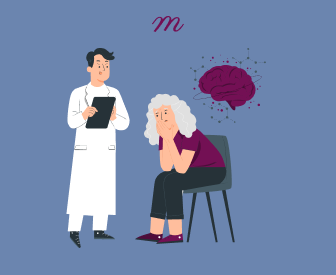Depression is a pervasive mental health condition that affects millions of individuals worldwide, leading to significant distress and impairing the ability to live a fulfilling life. As the incidence of depression continues to rise, the need for effective, evidence-based treatments has never been more critical. Among these treatments, Behavioral Activation Therapy (BAT) has emerged as a particularly powerful intervention, offering a practical and action-oriented path to recovery. Unlike traditional therapies that may focus heavily on introspection and analysis, BAT encourages individuals to re-engage with their environment through meaningful activities, breaking the cycle of depression by fostering positive reinforcement.
In this article, we delve into the science behind BAT, providing a step-by-step guide for therapists who wish to implement this technique in their practice. By understanding and applying the principles of BAT, therapists can equip their clients with the tools they need to regain control over their lives, improve their mood, and rediscover a sense of purpose.
To illustrate each step, we'll follow the journey of Sarah, a 35-year-old woman who has been struggling with depression for several years. Sarah used to be an active, social person who loved painting and spending time outdoors. However, after a series of personal setbacks, including the loss of her job and the end of a long-term relationship, Sarah gradually withdrew from her hobbies and social circles. Her days became marked by inactivity and feelings of hopelessness.
The Foundation of Behavioral Activation
Behavioral Activation Therapy is grounded in the behavioral model of depression, which posits that depression is often maintained by a reduction in rewarding activities, leading to a vicious cycle of withdrawal, negative emotions, and further avoidance of potentially positive experiences. When individuals begin to disengage from activities that once brought them joy, their mood spirals downward, reinforcing the depressive state. BAT aims to disrupt this destructive cycle by encouraging clients to reconnect with activities that are likely to yield positive reinforcement, thereby enhancing their mood and overall well-being.
Research has consistently shown that BAT is as effective as, and in some cases more effective than, traditional cognitive-based therapies for treating depression. This makes it an invaluable tool in any therapist’s repertoire, particularly for clients who may struggle with the cognitive demands of other therapeutic approaches.
For Sarah, the focus of BAT would be on helping her re-engage with activities that once brought her joy, like painting and spending time in nature, while gradually addressing the behaviors that have kept her stuck in her depression.
The Process
Starting with a Thorough Assessment
Before embarking on the BAT journey, it is essential to conduct a comprehensive assessment of the client’s current activity levels, mood patterns, and avoidance behaviors. This initial assessment is crucial for identifying the specific areas where intervention is needed and for tailoring the therapy to the client’s unique circumstances. Understanding the client’s core values and what they find meaningful in life will guide the selection of activities, ensuring that the therapy is both relevant and motivating.
In Sarah's case, the therapist began by exploring her daily routine—or lack thereof—and identifying the moments when she felt particularly low. Through discussion, they uncovered that Sarah often spent entire days on the couch, avoiding any activities she once enjoyed. The therapist also learned that Sarah still valued creativity and connection with nature, even though she hadn't engaged in those activities for months.
Client engagement is a key determinant of success in BAT. Therapists should take the time to explain the evidence-based nature of the therapy, emphasizing its focus on action and tangible results rather than mere introspection. By setting clear expectations and fostering a supportive therapeutic relationship, therapists can help alleviate any initial skepticism and encourage the client’s active participation.
Sarah's therapist took time to explain how BAT could help her rediscover the joy she once felt in her hobbies, emphasizing that the therapy would involve small, manageable steps designed to gradually rebuild her confidence and lift her mood.
Activity Monitoring: Laying the Groundwork
The first practical step in BAT is activity monitoring, a process that involves the client tracking their daily activities alongside their mood. This exercise is not just about logging behaviors; it’s about uncovering patterns that may be contributing to the client’s depression. For instance, a client might discover that periods of inactivity or certain avoidance behaviors are closely linked to worsening mood.
Sarah was encouraged to keep a journal for a week, noting down what she did each hour and how she felt during those activities. Initially, her log showed long stretches of inactivity, where she would watch TV or scroll through her phone, accompanied by feelings of emptiness and despair. However, she also noted brief moments of slight improvement in mood when she walked her dog in the nearby park, highlighting a potential area for re-engagement.
Encouraging clients to maintain detailed logs of their activities and emotions allows both the therapist and the client to gain valuable insights. These logs become a vital tool in the therapy process, serving as a foundation for identifying areas where change is needed and preparing the client for the next stages of BAT.
Activity Scheduling: Reintroducing Joy and Purpose
Once the activity patterns have been identified, the next step is to reintroduce positive and meaningful activities into the client’s routine. This is done through activity scheduling, where specific, manageable tasks are planned in advance. The goal is to select activities that align with the client’s values and have the potential to improve their mood.
For Sarah, her therapist suggested starting with two activities that she used to enjoy: painting and walking in nature. They began with small, achievable goals—spending just 15 minutes each day on a painting project and taking a short walk in the park three times a week. These activities were chosen because they were tied to Sarah’s values and had the potential to provide an immediate sense of satisfaction.
It is essential to start small, particularly for clients who may be deeply entrenched in their depressive state. For Sarah, reintroducing these activities was not just about doing something she used to love; it was about rebuilding her sense of agency and creating moments of positive reinforcement in her day.
Tackling Avoidance Behaviors
A significant aspect of BAT is addressing avoidance behaviors—those actions or inactions that clients use to escape from distressing thoughts, feelings, or situations. These behaviors often perpetuate the cycle of depression, as they prevent clients from engaging in activities that could potentially enhance their mood.
Regarding Sarah, avoidance was a significant barrier to recovery. She avoided painting because she feared her work would no longer be as good as it used to be. She also avoided social situations, fearing judgment from friends she hadn’t seen in months. The therapist worked with Sarah to identify these avoidance patterns and to challenge them gradually. For instance, Sarah was encouraged to start painting without worrying about the outcome and to slowly reconnect with a close friend by sending a simple text message.
Identifying these avoidance patterns is the first step toward overcoming them. Once recognized, therapists can help clients confront these behaviors in a controlled and manageable way, as seen in Sarah’s gradual approach to re-engaging with her social and creative life.
Enhancing Positive Reinforcement
Central to BAT is the concept of positive reinforcement—encouraging clients to engage in activities that provide a sense of reward and satisfaction. This could involve participating in social interactions, pursuing hobbies, or simply engaging in everyday tasks that offer a sense of accomplishment.
As Sarah began to engage in her scheduled activities, her therapist helped her to recognize the small victories. After completing a short painting session, Sarah was encouraged to reflect on how it felt to engage in something creative again, even if just for a few minutes. Similarly, after a walk in the park, Sarah noted a slight lift in her mood. These moments of positive reinforcement were critical in helping Sarah build momentum and stay motivated to continue the activities.
Therapists play a crucial role in helping clients recognize and savor these positive experiences. By reinforcing the moments that bring joy or fulfillment, therapists can help clients maintain motivation, making it easier for them to continue engaging in positive behaviors.
Tailoring BAT to Individual Needs
While BAT provides a structured framework, it is essential to tailor the therapy to each client’s individual needs and circumstances. This means considering the client’s specific situation, preferences, and cultural background when selecting activities and setting goals. The values assessment conducted during the initial phase is particularly valuable here, ensuring that the chosen activities are meaningful and motivating for the client.
For Sarah, the therapist ensured that the activities aligned with her personal values of creativity and connection with nature. When Sarah expressed that some days felt too overwhelming to paint, the therapist adjusted the plan, suggesting that she could instead engage in another small, creative task like coloring in a book or sketching, which felt less daunting.
For clients with severe depression, it may be necessary to start with very simple tasks, while those with milder symptoms may be ready to engage in more complex activities. The key to success is flexibility and responsiveness, adapting the therapy as needed to achieve the best possible outcomes.
Monitoring Progress and Adapting the Plan
Continuous monitoring is a cornerstone of successful BAT. Regularly reviewing activity logs and mood ratings allows the therapist to assess the effectiveness of the therapy, identify patterns of improvement, and address any setbacks that may arise.
Sarah and her therapist reviewed her activity logs weekly, discussing what worked and what didn’t. On weeks when Sarah struggled to meet her goals, they explored the reasons why and adjusted the plan accordingly. For instance, if Sarah found it difficult to paint, they would discuss alternatives, like visiting an art gallery for inspiration or setting even smaller, more achievable goals.
If progress is slower than expected, it may be necessary to adjust the treatment plan. This could involve revisiting the activity schedule, addressing new avoidance behaviors, or exploring additional sources of positive reinforcement. Celebrating even small successes is important, as it can boost the client’s confidence and motivation, encouraging them to continue on their path to recovery.
Integrating BAT with Other Therapies
BAT can be seamlessly integrated with other therapeutic approaches, such as Cognitive Behavioral Therapy (CBT) or mindfulness practices, to enhance treatment outcomes. By combining these methods, therapists can provide a more comprehensive approach that addresses both the behavioral and cognitive aspects of depression.
For Sarah, BAT was integrated with mindfulness practices that helped her stay present during her walks and painting sessions, reducing the anxiety that often accompanied these activities. The combination of BAT with mindfulness allowed Sarah to not only re-engage with her environment but also to enjoy the moment, which significantly contributed to her overall progress.
When integrating BAT with other therapies, it is important to consider the client’s specific needs and how different approaches might complement each other. A holistic approach is particularly beneficial for clients like Sarah, who may benefit from addressing both the behavioral and cognitive aspects of their depression.
Conclusion
Behavioral Activation Therapy offers a practical, evidence-based approach to treating depression that is both accessible and effective. By focusing on re-engaging clients in positive activities and addressing avoidance behaviors, BAT helps individuals break free from the cycle of depression and move toward a more engaged, fulfilling life.
For therapists, BAT provides a structured yet flexible framework that can be adapted to meet the unique needs of each client. Whether used alone or in combination with other therapies, BAT has the potential to significantly improve mental health outcomes and empower clients to regain control over their lives.
As with any therapeutic approach, continuous learning and adaptation are key. By refining your BAT skills and tailoring your methods to each client, you can help your clients achieve lasting change and pave the way for a brighter future.
If you’re a therapist looking to expand your treatment options, consider incorporating BAT into your practice. This evidence-based approach could be the powerful tool your clients need on their journey to better mental health.
Refrences:
Dimidjian, S., Hollon, S., Dobson, K., Schmaling, K., Kohlenberg, R., Addis, M., Gallop, R., McGlinchey, J., Markley, D., Gollan, J., Atkins, D., Dunner, D., & Jacobson, N. (2006). Randomized trial of behavioral activation, cognitive therapy, and antidepressant medication in the acute treatment of adults with major depression. Journal of consulting and clinical psychology, 74 4, 658-70 . https://doi.org/10.1037/0022-006X.74.4.658
- Dimidjian, S., Hollon, S., Dobson, K., Schmaling, K., Kohlenberg, R., Addis, M., Gallop, R., McGlinchey, J., Markley, D., Gollan, J., Atkins, D., Dunner, D., & Jacobson, N. (2006). Randomized trial of behavioral activation, cognitive therapy, and antidepressant medication in the acute treatment of adults with major depression. Journal of consulting and clinical psychology, 74 4, 658-70 . https://doi.org/10.1037/0022-006X.74.4.658
Dobson, K., Hollon, S., Dimidjian, S., Schmaling, K., Kohlenberg, R., Gallop, R., … & Jacobson, N. (2008). Randomized trial of behavioral activation, cognitive therapy, and antidepressant medication in the prevention of relapse and recurrence in major depression. Journal of Consulting and Clinical Psychology, 76(3), 468-477. https://doi.org/10.1037/0022-006X.76.3.468
- Dobson, K., Hollon, S., Dimidjian, S., Schmaling, K., Kohlenberg, R., Gallop, R., … & Jacobson, N. (2008). Randomized trial of behavioral activation, cognitive therapy, and antidepressant medication in the prevention of relapse and recurrence in major depression. Journal of Consulting and Clinical Psychology, 76(3), 468-477. https://doi.org/10.1037/0022-006X.76.3.468
Jacobson, N. S., Dobson, K. S., Truax, P. A., Addis, M. E., Koerner, K., Gollan, J. K., Gortner, E., & Prince, S. E. (1996). A component analysis of cognitive-behavioral treatment for depression. Journal of consulting and clinical psychology, 64(2), 295–304. https://doi.org/10.1037//0022-006x.64.2.295
- Jacobson, N. S., Dobson, K. S., Truax, P. A., Addis, M. E., Koerner, K., Gollan, J. K., Gortner, E., & Prince, S. E. (1996). A component analysis of cognitive-behavioral treatment for depression. Journal of consulting and clinical psychology, 64(2), 295–304. https://doi.org/10.1037//0022-006x.64.2.295
Jacobson, N., Martell, C., & Dimidjian, S. (2006). Behavioral Activation Treatment for Depression: Returning to Contextual Roots. Clinical Psychology-science and Practice, 8, 255-270. https://doi.org/10.1093/CLIPSY.8.3.255.
- Jacobson, N., Martell, C., & Dimidjian, S. (2006). Behavioral Activation Treatment for Depression: Returning to Contextual Roots. Clinical Psychology-science and Practice, 8, 255-270. https://doi.org/10.1093/CLIPSY.8.3.255.
Lejuez, C. W., Hopko, D. R., & Hopko, S. D. (2001). A brief behavioral activation treatment for depression: Treatment manual. Behavior Modification, 25(2), 255-286. https://doi.org/10.1177/0145445501252005
- Lejuez, C. W., Hopko, D. R., & Hopko, S. D. (2001). A brief behavioral activation treatment for depression: Treatment manual. Behavior Modification, 25(2), 255-286. https://doi.org/10.1177/0145445501252005
Mazzucchelli, T. G., Kane, R. T., & Rees, C. S. (2009). Behavioral activation treatments for depression in adults: A meta‐analysis and review. Clinical Psychology: Science and Practice, 16(4), 383-411. https://doi.org/10.1111/j.1468-2850.2009.01178.x
- Mazzucchelli, T. G., Kane, R. T., & Rees, C. S. (2009). Behavioral activation treatments for depression in adults: A meta‐analysis and review. Clinical Psychology: Science and Practice, 16(4), 383-411. https://doi.org/10.1111/j.1468-2850.2009.01178.x
Hopko, D.R., Lejuez, C.W., Ruggiero, K.J. and Eifert, G.H. (2003). Contemporary Behavioral Activation Treatments for Depression: Procedures, Principles, and Progress. Clinical Psychology Review, 23, 699-717. http://dx.doi.org/10.1016/S0272-7358(03)00070-9
- Hopko, D.R., Lejuez, C.W., Ruggiero, K.J. and Eifert, G.H. (2003). Contemporary Behavioral Activation Treatments for Depression: Procedures, Principles, and Progress. Clinical Psychology Review, 23, 699-717. http://dx.doi.org/10.1016/S0272-7358(03)00070-9
Why other mental health professionals love Mentalyc

“Do yourself a favor, make your life easier. Use the tools that are readily available … I found Mentalyc to be one of the best tools that I’ve ever used.”
Licensed Marriage and Family Therapist

“It immediately changed my quality of life, personally and professionally. I went from 3–4 hours a week of notes to 1 hour at most … that alone is invaluable personally and professionally.”
Owner/Independently Licensed Marriage & Family Therapist (IMFT)

“If I were recommending this software to a colleague, I would tell them that it is the best thing that they could do for their practice.”
Licensed Professional Counselor

“For those who have hesitations … It is a lifesaver. It will change your life and you have more time to be present with your patients.”
Licensed Clinical Social Worker







